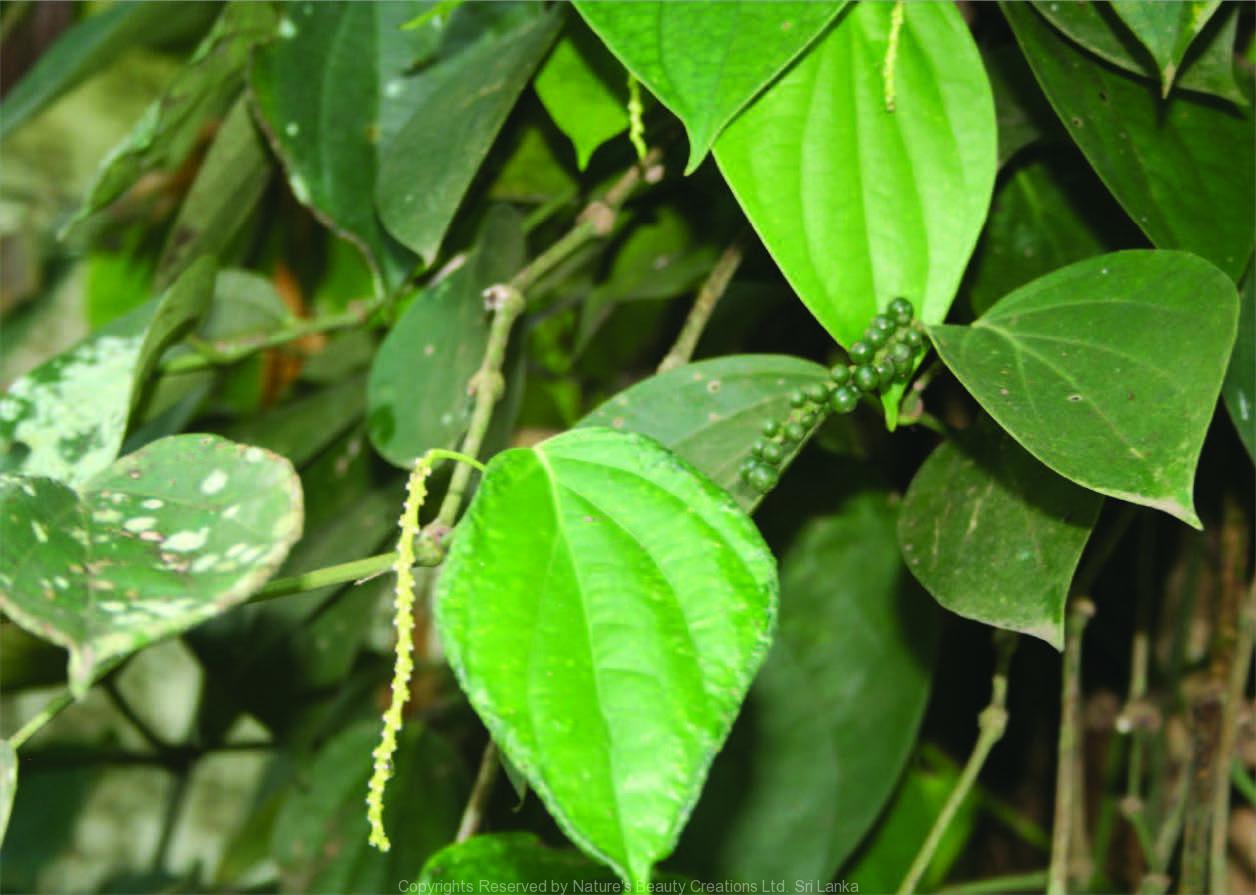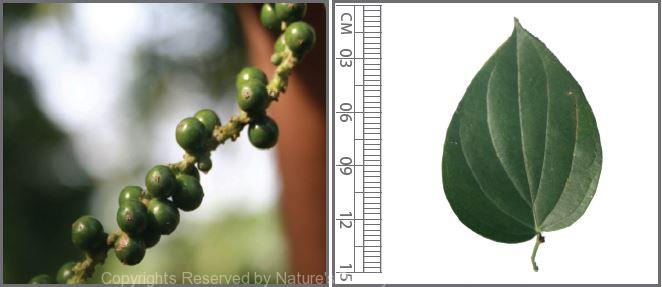

Traditional Knowledge
Useful plant parts :
Fruit
Uses in traditional medicine :
- A fresh fruit is crushed and mixed with cow milk and given for cough and indigestion in children
- Acts as a stomachic, carminative, abortifacient, rubefacient, counterirritant and induces bile
- Used in the treatment of dyspepsia, flatulence, gonorrhoea, haemorrhoids, intermittent fever, piles, elephantiasis, vomiting in cholera, chronic rheumatism and dysentery
Scientific Research
Chemical constituents:
Alkaloids: piperine, pipercyclobutanamides A and B, pyrrolidine alkamide: isopiperolein B, isobutyleicosatrienamide, pellitorine, trachyone and pergumidiene from fruit
Bioactivity :
Petroleum ether extract of fruits: antibacterial; piperine: antidiarrhoeal, anti-inflammatory, antinociceptive, antiarthritic, antidiabetic, anticancer; water and ethanol extracts of seeds: antioxidative
Clinical:
Piperine has increased the bioavailability of the anticonvulsant drug phenytoin in patients suffering from epilepsy
Note :
Dried fruits are used to prepare foods
References : Atal, S. et al., (2012), Evaluation of the effect of piperine on blood glucose level in alloxan-induced diabetic mice, Acta Pol Pharm, 69(5), 965-9. Bajad, S. et al., (2001), Antidiarrhoeal Activity of Piperine in Mice, Planta Med, 67(3), 284-287. Bang, J. S. et al., (2009), Anti-inflammatory and antiarthritic effects of piperine in human interleukin 1β-stimulated fibroblast-like synoviocytes and in rat arthritis models, Arthritis Research & Therapy, 11(2), 49. Chatterjee, S. et al., (2007), Antioxidant activity of some phenolic constituents from green pepper (Piper nigrum L.) and fresh nutmeg mace (Myristica fragrans), Food Chemistry, 101, 515–523. Fujiwara, Y. et al., (2001), Two new alkaloids, piper cyclobutanamides A and B, from Piper nigrum, Tetrahedron Letters, 42, 2497–2499. Gulcin, I., (2005), The antioxidant and radical scavenging activities of black pepper (Piper nigrum) seeds, Tetrahedron, 56(7), 491-499. Liu, Y. et al., (2010), Inhibitory effects of black pepper (Piper nigrum) extracts and compounds on human tumor cell proliferation, cyclooxygen- ase enzymes, lipid peroxidation and nuclear transcription factor-kappa-B, Nat Prod Commun 5(8), 1253-7. Meghwal, M. and Goswami, T. K., (2013), Piper nigrum and piperine: an update, Phytother Res, 27(8), 1121-30. Mujumdar, A. M. et al., (1990), Anti-inflammatory activity of piperine, Japanese Journal of Medical Science & Biology, 43(3), 95-100. Pattanaik, S. et al., (2006), Effect of Piperine on the Steady-state Pharmacokinetics of Phenytoin in Patients with Epilepsy, Phytotherapy Research, 20, 683–686. Reddy, S. V. et al., (2004), Antibacterial constituents from the berries of Piper nigrum, Phytomedicine, 11, 697–700. Srinivas, P. V. and Rao, J. M., (1999), Isopiperolein B: an alkamide from Piper nigrum, Phytochemistry, 52, 957-958.
Copyrights Reserved By
Natures Beauty Creations



